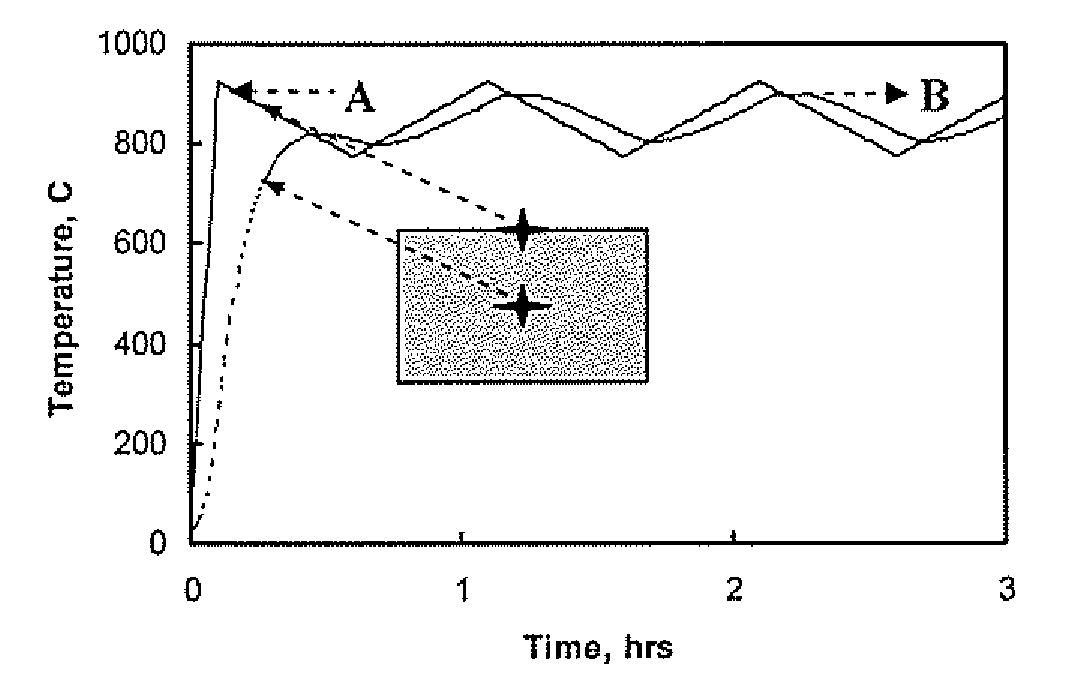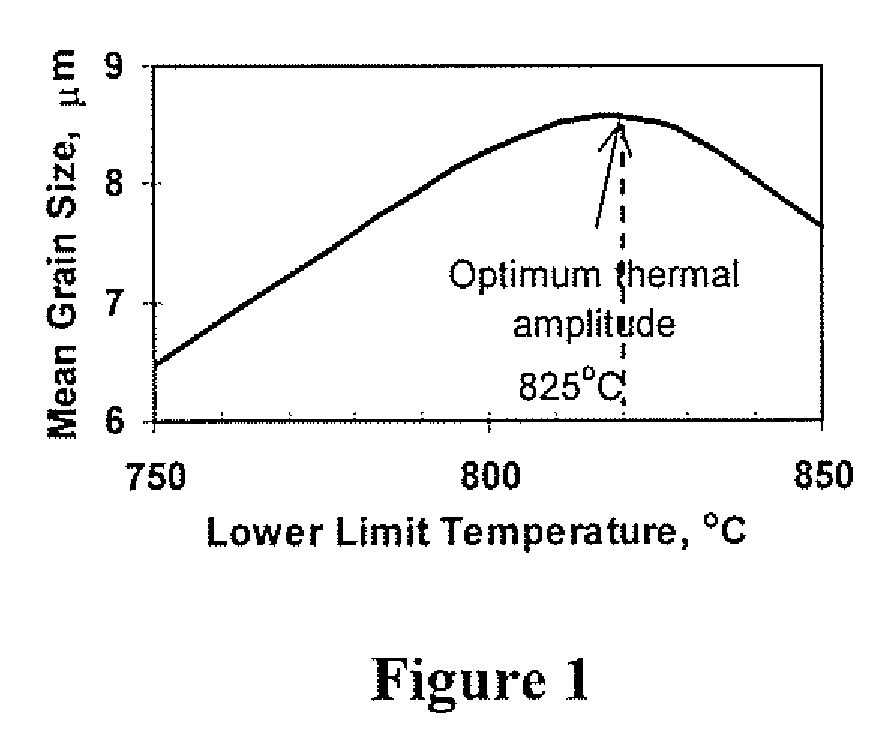Method of thermal treatment of components
a technology of thermal treatment and components, applied in heat treatment equipment, lighting and heating equipment, furnaces, etc., can solve the problems of reducing productivity, reducing the performance of components, and longer time required for isothermal thermal processing, so as to reduce the treatment time and increase productivity.
- Summary
- Abstract
- Description
- Claims
- Application Information
AI Technical Summary
Benefits of technology
Problems solved by technology
Method used
Image
Examples
example 1
[0018]a) Samples from Ti-6A1-4V alloy rods (each of 15 mm diameter and 3 mm thickness) were subjected to cyclic thermal processing at different thermal amplitudes in a laboratory furnace. The upper temperature of the thermal amplitudes was kept constant at 925° C. and the lower temperature of the thermal amplitudes was varied from 750 to 850° C. The heating and cooling rates for all the samples were kept at 5° C. / min. The optimum thermal amplitude at which phase transformation kinetics of the samples was maximum was found to be when the samples were annealed at the thermal amplitude of 100° C. with the higher and lower temperatures at 925° C. and 825° C., respectively as illustrated in FIG. 1 of the accompanying drawings. A thermal amplitude of 150° C. higher than the optimum thermal amplitude was selected wherein the upper temperature was 925° C. and the lower temperature was 775° C. The higher thermal amplitude was selected by mathematical simulation. The rods were subjected to cy...
PUM
| Property | Measurement | Unit |
|---|---|---|
| temperature | aaaaa | aaaaa |
| temperatures | aaaaa | aaaaa |
| temperatures | aaaaa | aaaaa |
Abstract
Description
Claims
Application Information
 Login to View More
Login to View More - R&D
- Intellectual Property
- Life Sciences
- Materials
- Tech Scout
- Unparalleled Data Quality
- Higher Quality Content
- 60% Fewer Hallucinations
Browse by: Latest US Patents, China's latest patents, Technical Efficacy Thesaurus, Application Domain, Technology Topic, Popular Technical Reports.
© 2025 PatSnap. All rights reserved.Legal|Privacy policy|Modern Slavery Act Transparency Statement|Sitemap|About US| Contact US: help@patsnap.com



